Blog
What Hood to Coast is REALLY like…
When hundreds of relay running teams leave Mt. Hood, and hundreds of relay walking teams leave Portland, and they are all trying to reach Seaside, Oregon in the shortest time possible … well, things can get a little sticky and stinky and FUN!!! Hood to Coast and its sister event, Portland to Coast, have been officially billed as the world’s largest relay race. Listen to me talk about placing 6th and the rest of my 2011 HTC/PTC adventures on Get Fit Now Radio!

Hood to Coast takes place on the last weekend of every August, and people come from all over the world to participate. Teams of runners tackle the 200-mile route from Mt. Hood to Seaside at the same time as teams of walkers go 130 miles from Portland, Ore. The two separate starting lines are well managed and full of excitement. Batches of teams are released every 15 minutes at predetermined times. The routes for runners and walkers are the same for the last 130 miles, but the experiences of each person can be very different! In fact, every team is different: some are young, some are old, some are elite athletes, some are doing their first event ever! My favorite things about Hood & Portland to Coast is the team support and how people decorate their vans.
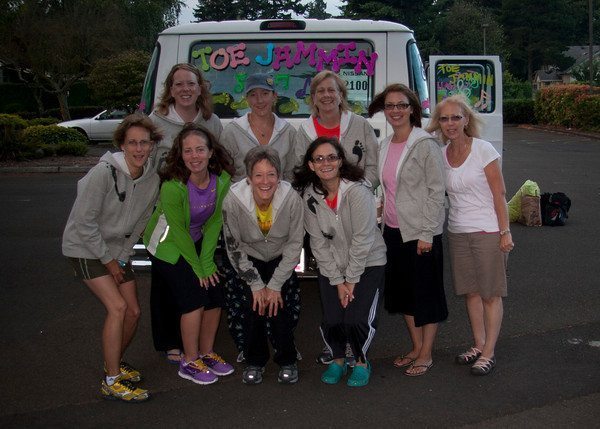
My team was comprised of eight people and a driver. Eight-person walking teams do three legs per participant while 12-person teams do two legs. Running teams with nine people get four legs each because of the greater distance they have to cover, and 12-person teams do three legs. However, these numbers can be tweaked, and I got passed by a guy who was a two-person team with his wife. They would kiss at each hand-off <3
Photos by Sarah Marie Photography
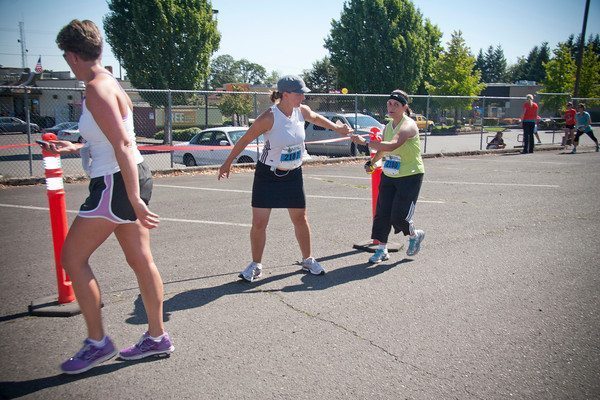
When one of your team members leaves an exchange and the baton has been successfully handed off, the rest of the team piles back into the van (which might be buried amongst hundreds of other vans at certain exchanges) and tries to get ahead of their walker to be able to offer support if needed. Since every participant does at least one walk in the dead of night and another in the high heat of mid-day sun, this support is crucial. Some argue the necessity for all athletes to carry their own water and supplies, but there are other factors to consider such as fainting or nausea from exhaustion. If a van rushes ahead without checking on their walker or runner, the abandoned participant could be injured.

In this next picture, you can see the vans on the right, my team in the middle, and some teams on the side of the road waiting at an exchange. It’s very important to get your van to each exchange and have your walker/runner ready to go. It takes a whole leg for a participant to change clothes, gear-up, warm up, stretch and be ready to go. Near the end of the race, people don’t stand around as much. The runners start catching up to the walkers, and major traffic jams ensue. This year’s last minute addition of hundreds of extra teams resulted in major backups, missed exchanges, lack of van support for athletes on the road, and a lot of frustrated volunteers and participants. Event staff hope to remedy this next year.
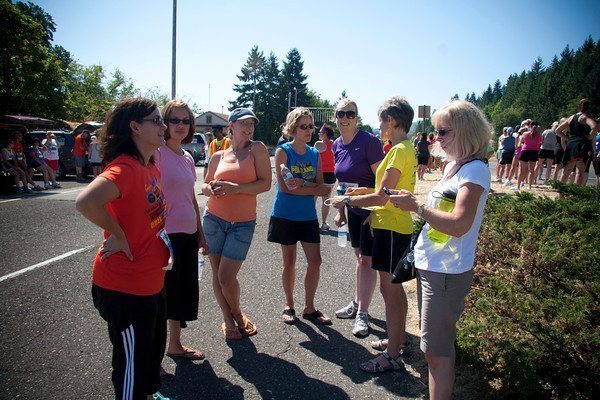
It always feels great to finish a leg, whether it’s your first – knowing you still have two to go – or your last, and you can finally relax. The runner’s high applies to race walkers, too! Coming into an exchange and hearing your team cheer for you makes you sprint those last few yards even if you were ready to die five minutes before that. My legs were 18, 26 & 34 which amounted to just under a total of 15 miles. I got about 8 hours to rest between legs.
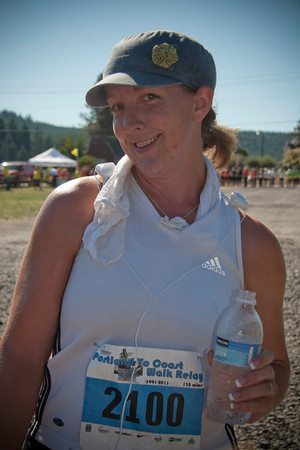
Um … uh, so what do people do if they, uh … need to go while they’re on the road? They use honeybuckets of course! There’s long brigades of blue banjos at each exchange, and they are well-used! A PTC or HTC team can be disqualified if someone is seen “not using” the honey buckets during a race leg. Incontinence on the race can’t always be avoided, though, and this is one of the top complaints from those who live along the race course! Ugh!
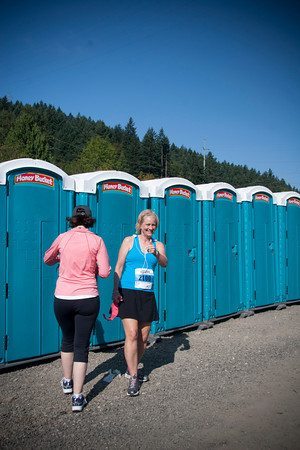
Our team left the starting line in Portland at 8:30 a.m. on Friday. Our last walker, Karyn, arrived at the beach around 11:45 a.m. on Saturday. At one point we were worried we wouldn’t make it to the beach in time to greet her as she reached the finish line, because Police were diverting vans to shuttle parking lots to avoid congestion in Seaside. The transfer went smoothly for us, but we heard that traffic back up really bad later and several teams got disqualified when their other vans didn’t push through to the finish line. Hopefully, those rulings will be changed.
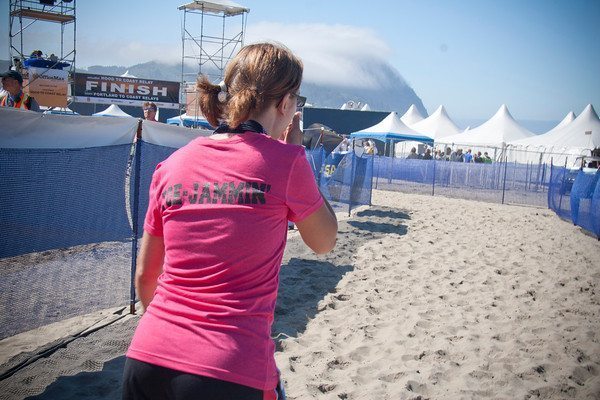
Many HTC and PTC teams wait anxiously on the beach for their last walker/runner to step onto the beach. An announcer sits on a high platform where he can see the numbers pinned on bellies and chests and legs. When your team’s number is called, everyone must be present and accounted for as you are ushered into one of four shutes just before the finish line. As your relay race participant approaches, your whole team gets to surround them as you all cross the finish line together!
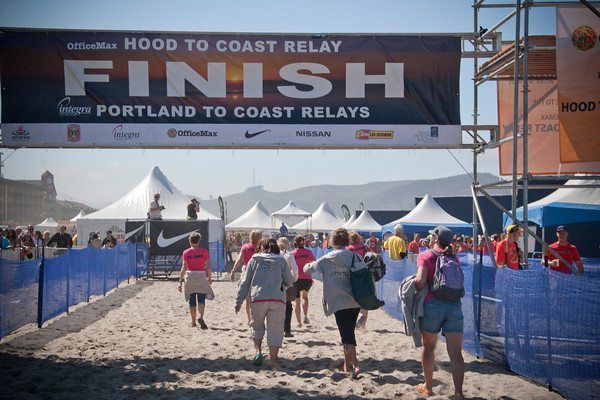

Hey Bethany, this was awesome to see people going through St. Helens. I saw your van and might have even seen you without realizing it!!! Way to go!!! 🙂
Just want to clarify that a HTC team would have to do it with 9 runners for them all to run 4 legs. 4×8=32. 🙂 4×9=36
Oh, you are totally right! I’ve been talking with runners all week, and no one had corrected me on that! Thanks!
Absolutely LOVE your blog and of course found you, after you left a comment on my blog!!! I’m looking forward to following you on Facebook and Twitter! Congrats on a fantastic race time! We left at 3:15am and our last walker arrived @ 10:30am!
I hope I did have chance to join you there but I need more than 15 hour plane to participate with you to that race 😀
You look all great! I did enjoy the pics too much 😉
Great post. Great photos. Love those kinds of races. Well done.
Pingback: All the Best Walking Resources | Fit2B Studio